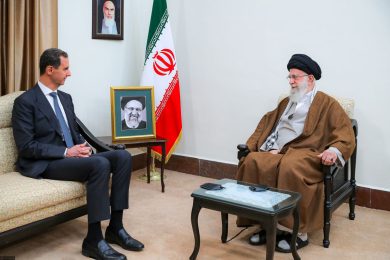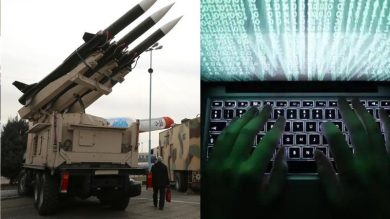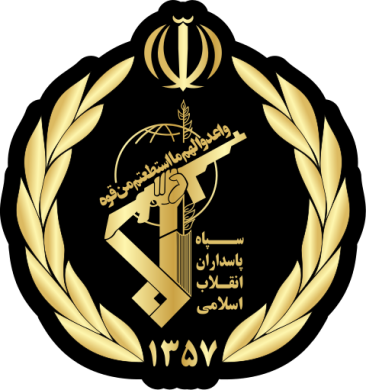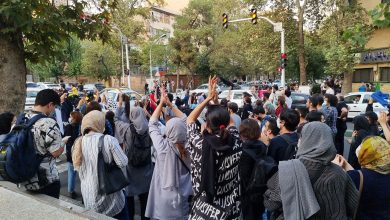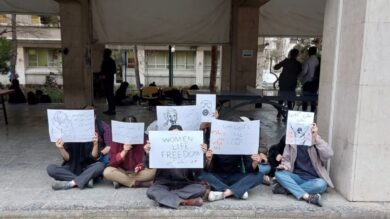The Islamic Revolutionary Guard Corps (IRGC) has played a central role in suppressing domestic protests in Iran, ensuring the survival of the Islamic Republic through widespread use of violence, intimidation, and surveillance. Established after the 1979 Islamic Revolution to protect the regime and its revolutionary ideals, the IRGC has evolved into a multifaceted organization with immense power over Iran’s military, political, and economic structures. At the heart of its operations is the systematic repression of dissent, targeting protesters, activists, and journalists who challenge the regime.
This report explores the IRGC’s methods of suppressing domestic protests, its use of paramilitary forces, and the long-term implications for Iranian society and human rights.
1. The IRGC’s Role in Domestic Security
A. Mandate to Protect the Regime
• The IRGC was founded to safeguard the Islamic Republic and its revolutionary values, prioritizing regime survival over citizens’ rights.
• It perceives protests and dissent as existential threats, categorizing activists and demonstrators as foreign-backed agents or internal enemies.
B. Collaboration with Other Security Forces
• The IRGC works closely with the Basij Resistance Force, a paramilitary organization under its control, to suppress protests.
• It coordinates with other intelligence and law enforcement agencies, including the Ministry of Intelligence and Security (MOIS), to monitor, detain, and silence dissenters.
2. Methods of Protest Suppression
A. Surveillance and Monitoring
• Mass Surveillance: The IRGC uses advanced surveillance technologies, including internet monitoring, facial recognition, and phone tracking, to identify and target protesters.
• Social Media Censorship: Activists’ online activities are closely monitored, with the IRGC frequently shutting down internet access during protests to disrupt communication.
• Cyber Tactics: The IRGC’s cyber units hack accounts, spread disinformation, and intimidate activists through digital harassment.
B. Violent Crackdowns
• Use of Force: During protests, the IRGC and its affiliates deploy live ammunition, rubber bullets, and tear gas against demonstrators, often resulting in fatalities.
• Detentions and Torture: Thousands of protesters, including women and minors, have been arrested during demonstrations, with many subjected to torture, sexual violence, and forced confessions.
• Extrajudicial Killings: The IRGC has been accused of carrying out targeted assassinations of prominent activists and dissenters, both within Iran and abroad.
C. Intimidation and Harassment
• Targeting Families: The IRGC harasses family members of activists to pressure them into silence.
• Public Fear Campaigns: Public executions and threats are used to instill fear and deter participation in protests.
3. Key Protest Movements Suppressed by the IRGC
A. The Green Movement (2009)
• Protests erupted following allegations of election fraud during Mahmoud Ahmadinejad’s re-election.
• The IRGC played a central role in suppressing the movement, detaining thousands and killing dozens of demonstrators.
B. Economic Protests (2017–2018)
• Nationwide protests over economic hardships saw the IRGC crack down on demonstrators, arresting thousands and branding them as enemies of the state.
C. November 2019 Fuel Protests
• In response to fuel price hikes, widespread protests were met with brutal force, with the IRGC killing over 1,500 protesters in what became one of the deadliest crackdowns in modern Iranian history.
D. 2022 Protests Following Mahsa Amini’s Death
• The IRGC and Basij were instrumental in suppressing protests triggered by the death of Mahsa Amini, a young woman arrested by the morality police.
• The crackdown included internet blackouts, mass arrests, and excessive use of force against women-led demonstrations.
4. The IRGC’s Control Over the Media
A. Propaganda Campaigns
• The IRGC uses state media to discredit protests, labeling demonstrators as “foreign agents” or “terrorists.”
• It spreads disinformation to delegitimize movements and justify its violent actions.
B. Silencing Independent Journalism
• Journalists reporting on protests face arrests, torture, and long prison sentences, ensuring the regime controls the narrative.
5. Impact on Iranian Society
A. Erosion of Civil Liberties
• The IRGC’s repressive actions have severely curtailed freedoms of speech, assembly, and press in Iran.
• Fear of surveillance and retaliation has created a climate of self-censorship among citizens.
B. Escalating Public Anger
• While the IRGC’s tactics suppress protests temporarily, the heavy-handed approach has deepened public resentment and distrust toward the regime.
C. Targeting Women and Minorities
• The IRGC disproportionately targets women and ethnic minorities, using protests as a pretext to suppress marginalized groups.
6. International Responses to the IRGC’s Actions
A. Sanctions
• The United States, European Union, and other nations have imposed sanctions on IRGC officials and entities involved in human rights abuses.
• Sanctions target IRGC-controlled companies, aiming to disrupt funding for repression.
B. Human Rights Advocacy
• NGOs and international organizations have documented the IRGC’s abuses, calling for accountability and supporting Iranian activists.
C. Global Solidarity
• Protests and campaigns worldwide, including the “Women, Life, Freedom” movement, have highlighted the IRGC’s brutality and amplified the voices of Iranian dissenters.
7. Recommendations for Addressing IRGC Repression
A. Strengthening Sanctions
• Expand targeted sanctions on IRGC leaders and affiliates responsible for human rights violations.
• Close loopholes that allow the IRGC to access global financial systems.
B. Supporting Digital Freedom
• Provide Iranian activists with tools and resources to bypass censorship and protect their communications.
• Advocate for global tech companies to resist cooperation with Iranian authorities.
C. Amplifying Activist Voices
• Support Iranian journalists and activists in exile to document and expose IRGC abuses.
• Increase international media coverage of protests and crackdowns.
Conclusion
The IRGC plays a central role in suppressing domestic protests, employing surveillance, violence, and intimidation to silence dissent and maintain regime control. Its actions have eroded civil liberties in Iran and fueled public anger, contributing to ongoing instability. To address this, the international community must strengthen sanctions, support activists, and hold the IRGC accountable for its human rights abuses. Only sustained pressure and global solidarity can challenge the IRGC’s grip on Iranian society and pave the way for a freer, more just Iran.
Join Our Newsletter!
Stay informed with the latest updates, news, and ways to take action in the fight for justice and global security. Sign up now to get updates delivered straight to your inbox!

